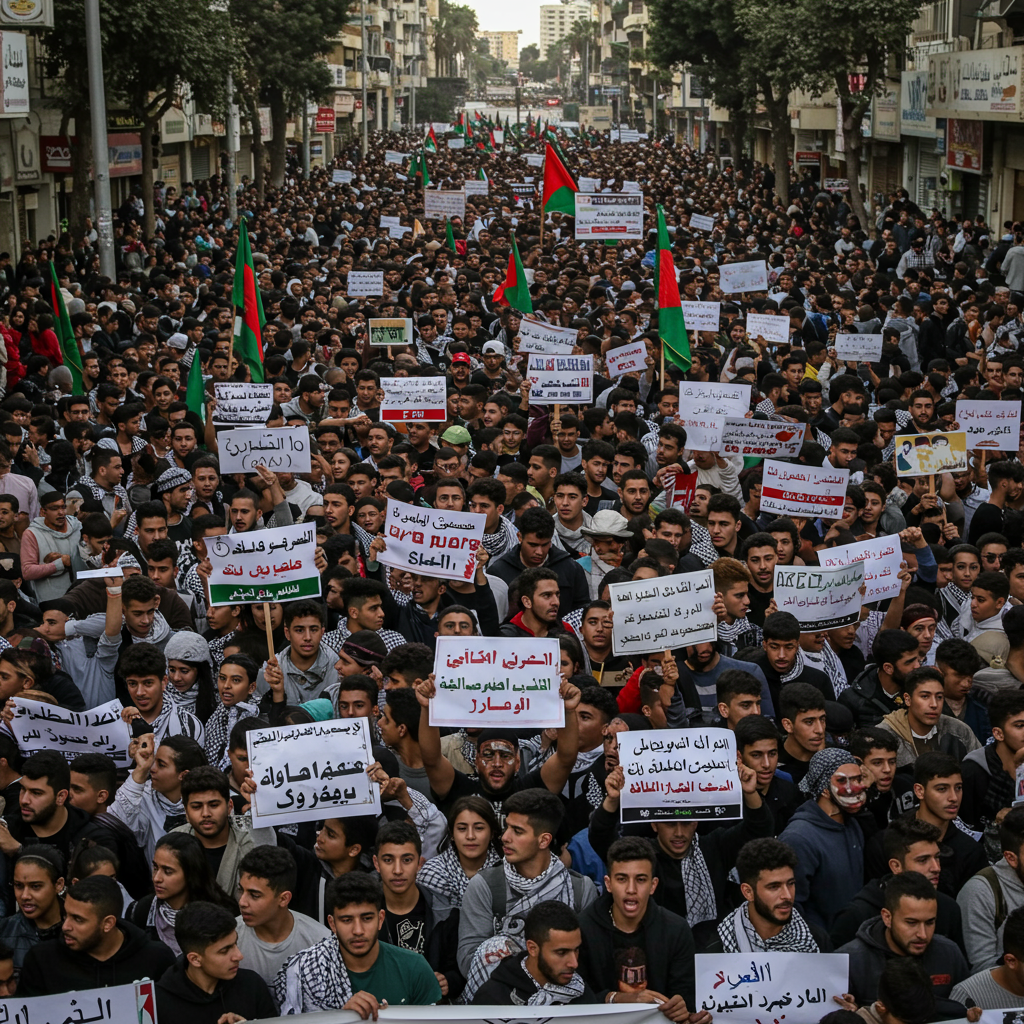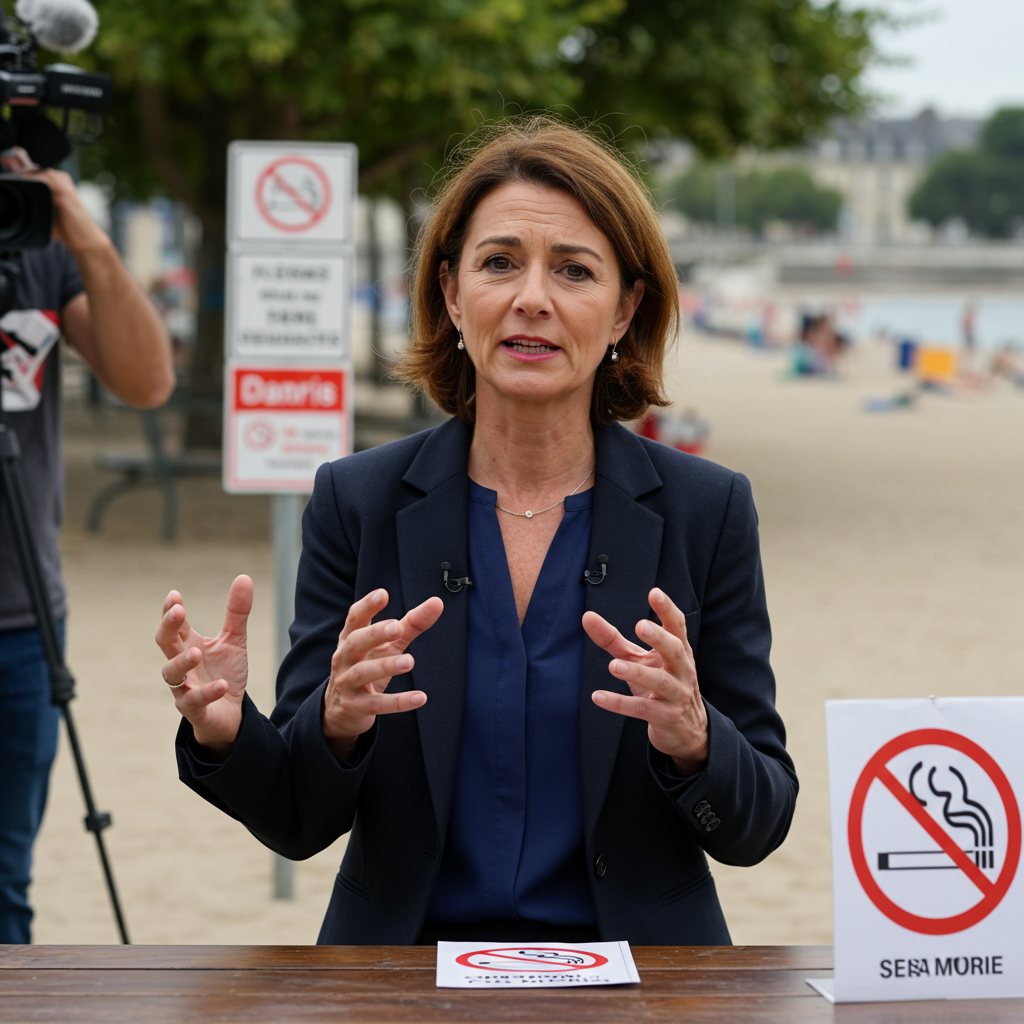March 2025 saw a rare and significant wave of anti-Hamas protests sweep across the Gaza Strip. Thousands took to the streets, from Beit Lahia in the north to Rafah in the south, chanting slogans like “Hamas are terrorists” and “Hamas, get out!” The scale and intensity of this unrest were unprecedented under the rule of the Islamist militant group, which has controlled Gaza since 2007.
These demonstrations weren’t primarily a call for peace or a rejection of Hamas’s strategy of “resistance” against Israel. Instead, they were a visceral expression of public anger directed at Hamas’s failure to protect the civilian population from the devastating consequences of the war initiated on October 7, 2023. The humanitarian situation in Gaza had become catastrophic, marked by widespread displacement, destruction, and a severe lack of essential resources, exacerbated by events like the Israeli evacuation order in hard-hit Beit Lahia shortly before the protests erupted.
Hamas’s Authority Built on Force, Not Consent
For years, Hamas has maintained its grip on power in Gaza through a combination of external resistance against Israel and internal repression of its own population. While the group originated from charities offering social services, its governance since taking power from Fatah in 2007 has relied heavily on coercion rather than popular legitimacy. This approach often involves diverting civilian infrastructure and resources for military purposes, clearly prioritizing its militant goals over civilian welfare.
Hamas operates through both a political wing and a powerful military wing, the ‘Izz ad-Din al-Qassam Brigades. Crucially, fighters from the Qassam Brigades frequently serve in internal policing roles, including within the secretive Majd unit, Hamas’s primary tool for suppressing dissent. This overlap means the strength of Hamas’s military directly impacts its capacity to control the population.
War’s Heavy Price Degrades Hamas’s Control
The key factor that enabled the March 2025 protests was the severe degradation suffered by the Qassam Brigades due to relentless combat since October 7, 2023. Estimates regarding militant casualties vary and are politically sensitive, but figures from Gaza’s Ministry of Health (with subsequent revisions removing non-combatants) and demographic analysis suggest a substantial number of adult men, potentially tens of thousands, have been killed. Based on this, analysts estimate that around 10,000 Qassam fighters – roughly one-third of their pre-war strength – may have been lost.
This level of attrition, whether through death on the front lines or redeployment of fighters to combat roles, appears to have temporarily crippled Hamas’s apparatus for internal repression. With fewer fighters available for policing, the group’s ability to immediately suppress dissent on the home front was significantly weakened, creating a brief window for public anger to surface.
The timing of the protests coincided directly with the resumption of intense hostilities following the collapse of a ceasefire in early March 2025. Hamas reportedly refused to extend the previous ceasefire under Israeli-American terms, and the subsequent return to violence, alongside the dire humanitarian conditions, is believed to have served as a direct impetus for ordinary Gazans to demonstrate against the group governing them.
Hamas’s Response: Targeted Brutality
Facing public outcry but potentially lacking the manpower for widespread crowd control tactics used in the past (like mass shootings), Hamas’s internal security forces adopted a strategy of targeted repression. Instead of firing into large crowds, they focused on identifying, detaining, and eliminating perceived leaders and youth activists behind the demonstrations.
A grim example is the reported case of Uday Raba’i, a youth activist who was allegedly kidnapped, tortured, and killed, with his body subsequently displayed publicly as a warning to others. This selective brutality, combined with increased surveillance, appears to have been Hamas’s primary method for regaining control.
While the protests did not escalate into a full-scale revolt, and Hamas has largely reasserted its authority since late March (though pockets of dissent may continue), instances like the Abu Samra family reportedly carrying out “blood vengeance” against a Hamas police officer suggest potential challenges to the group’s absolute monopoly on force and a possible decrease in residents’ fear of reprisal among some segments of the population.
The Future of Dissent in Gaza
The subsidence of the protests seems less a reflection of renewed popularity for Hamas and more a result of the group’s willingness to dedicate increasingly scarce resources toward internal policing and the psychological fatigue among the population from the ongoing conflict.
The events underscore that future anti-Hamas unrest in Gaza will likely depend less on the depth of public dissatisfaction (which remains high due to the war’s impact) and more on the militant group’s fluctuating capacity to suppress opposition through force. As long as the war continues, Hamas will be forced to balance its external fight with Israel against the internal struggle to maintain control over a population increasingly fed up with the devastating cost of conflict. The protesters’ message was clear: a desire for leadership that prioritizes stability and basic welfare over unending violence.



